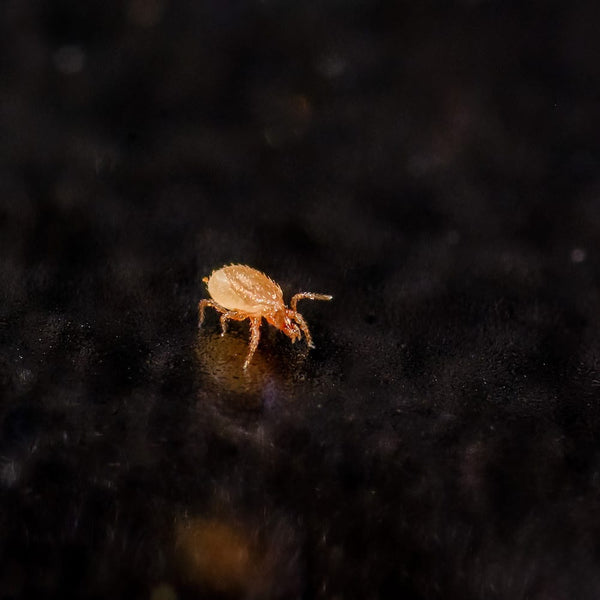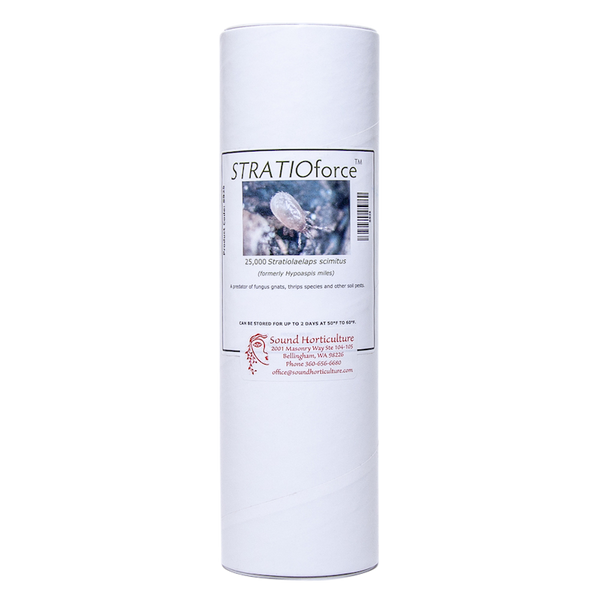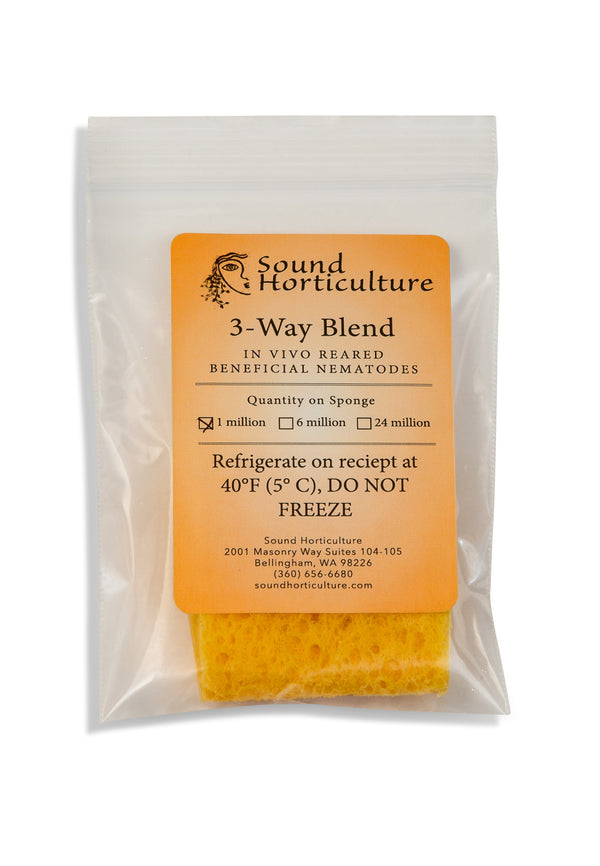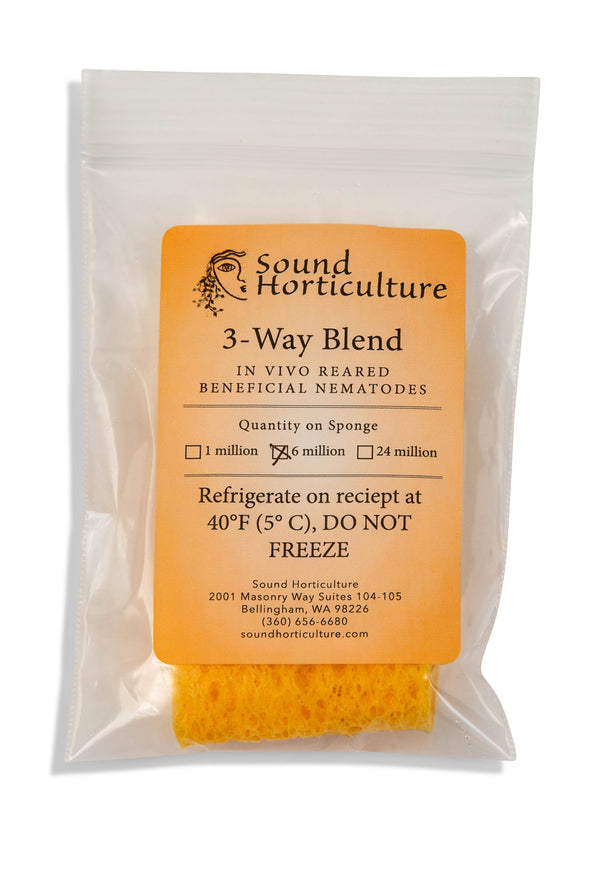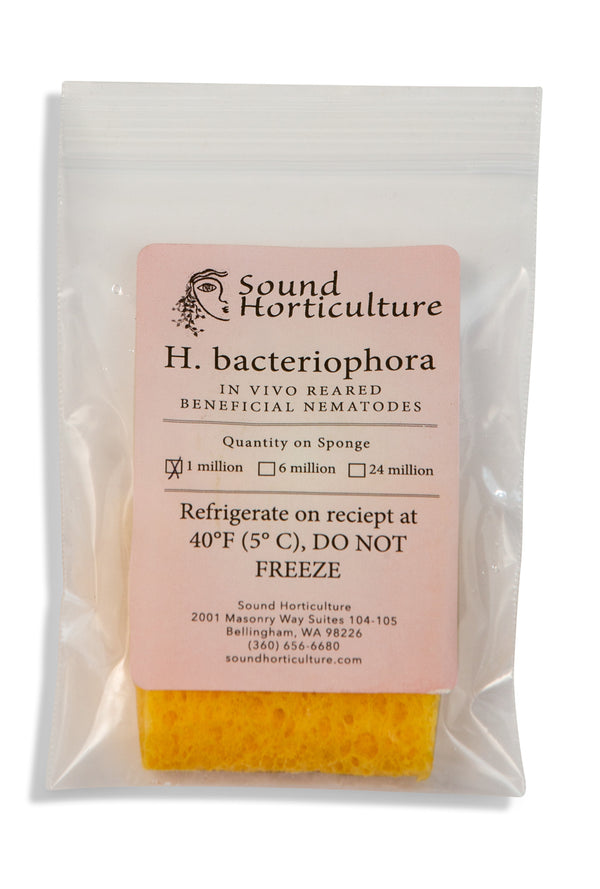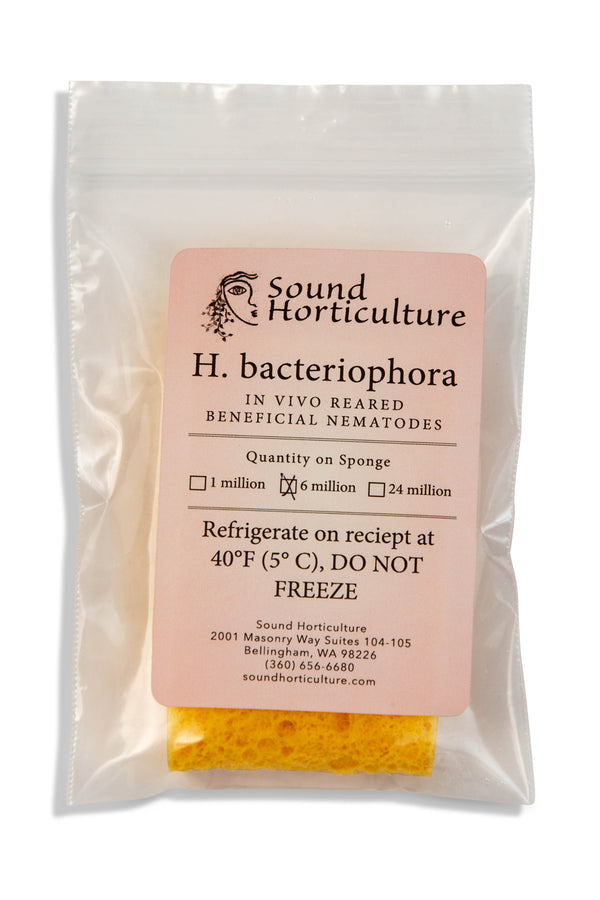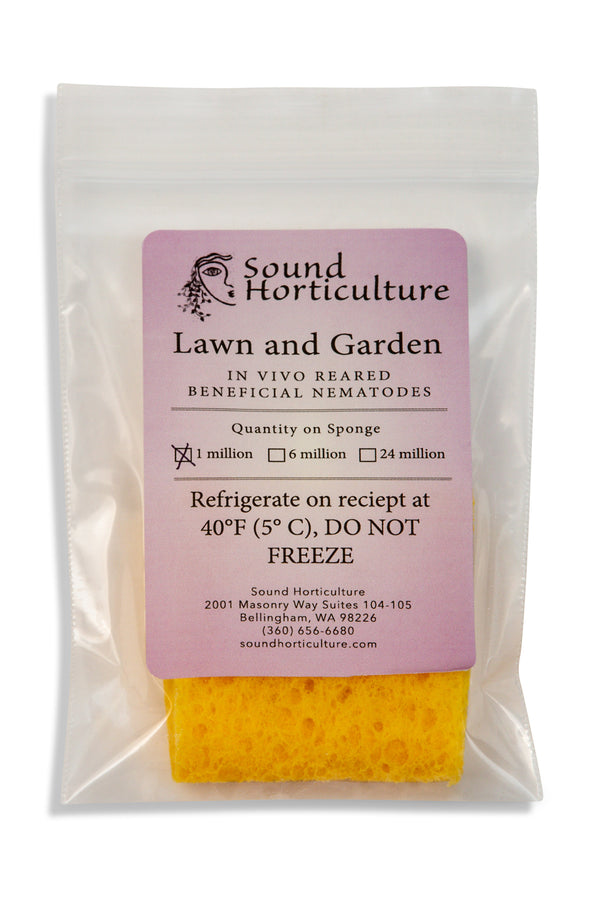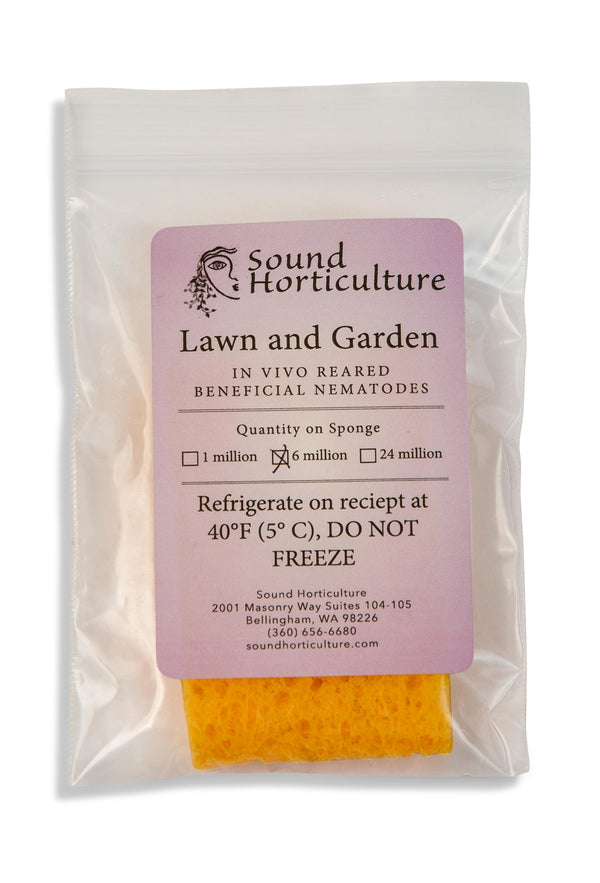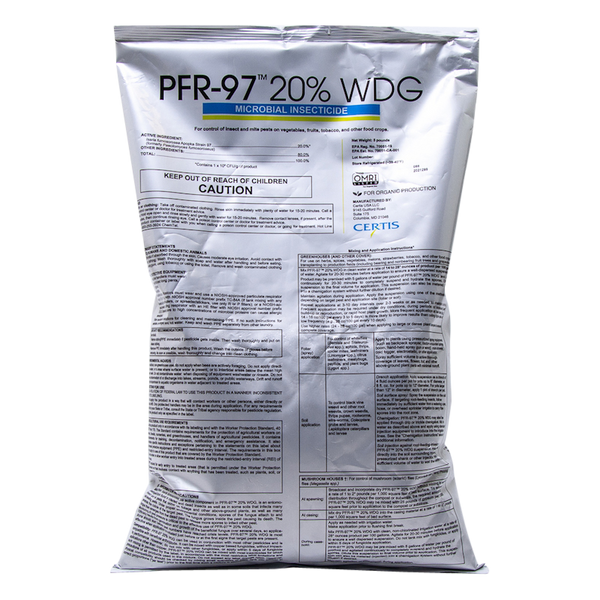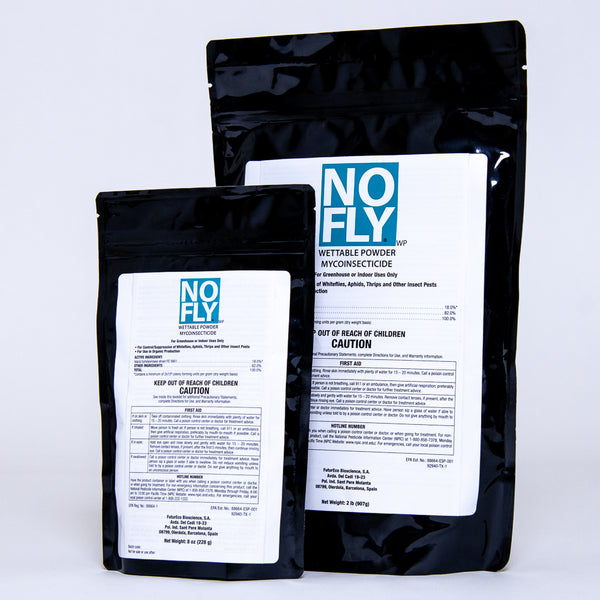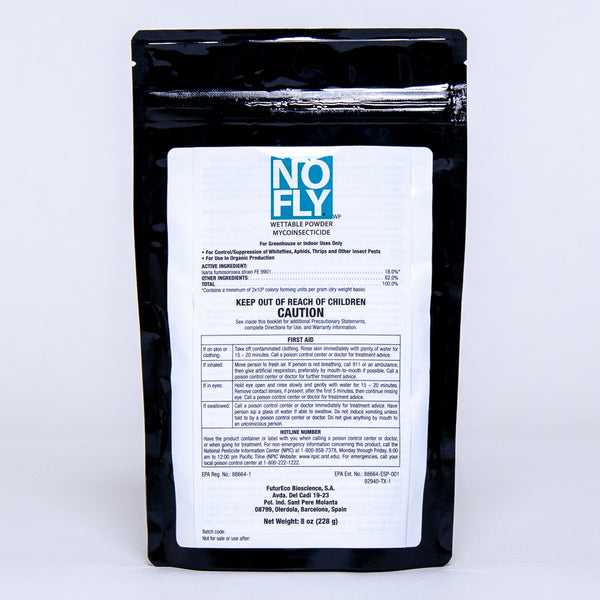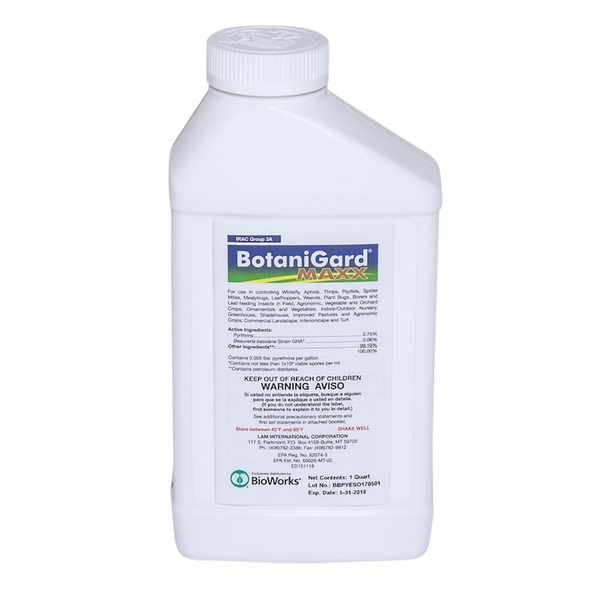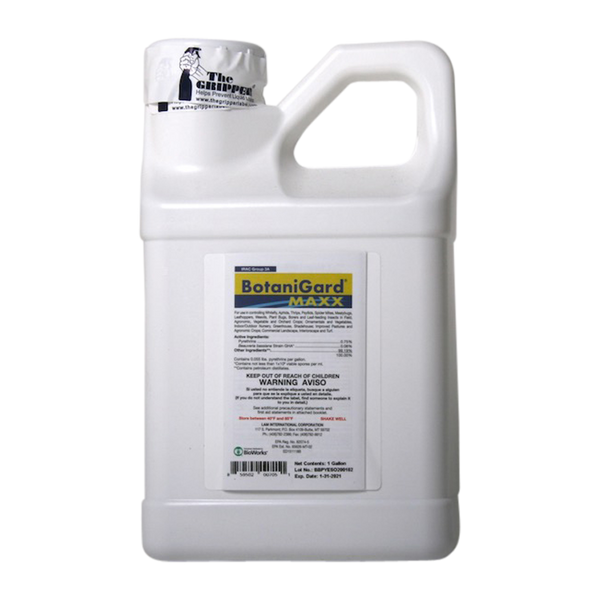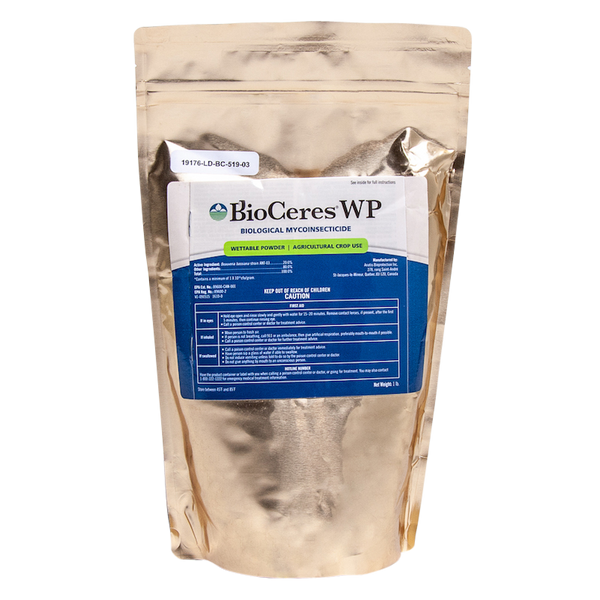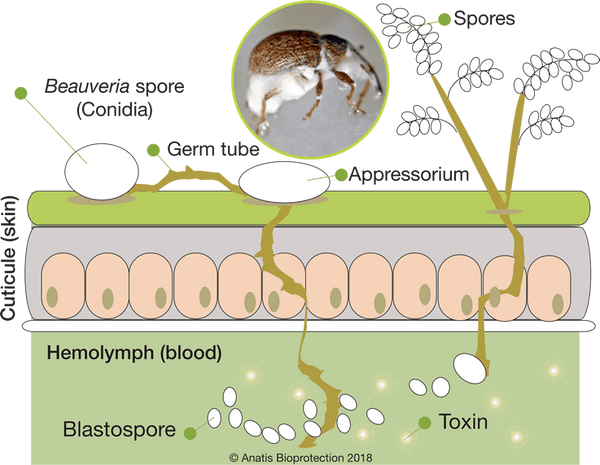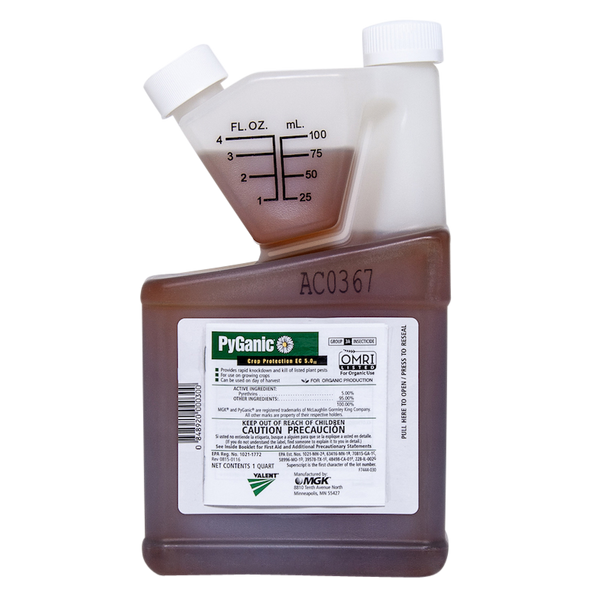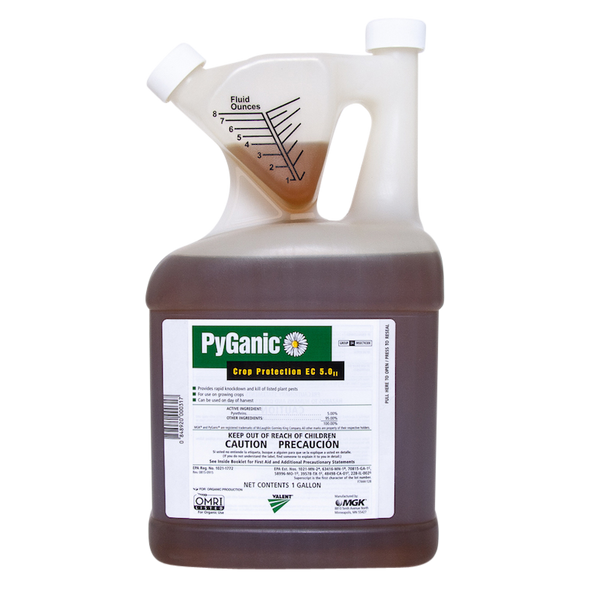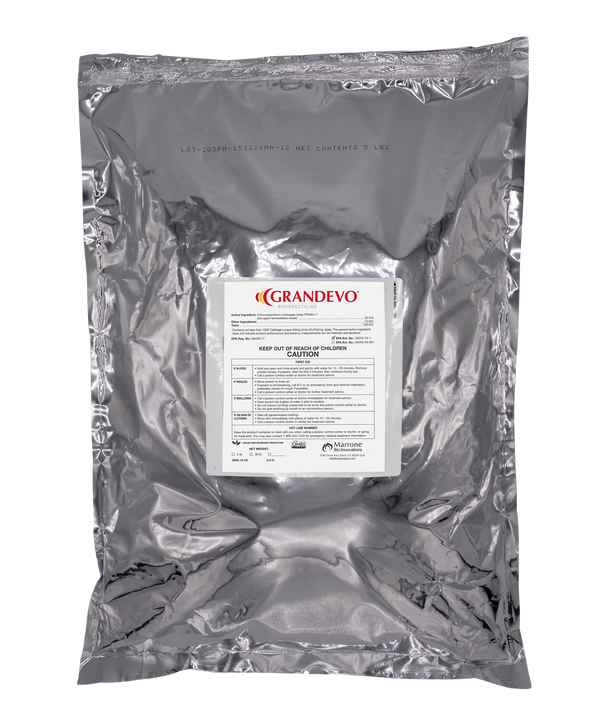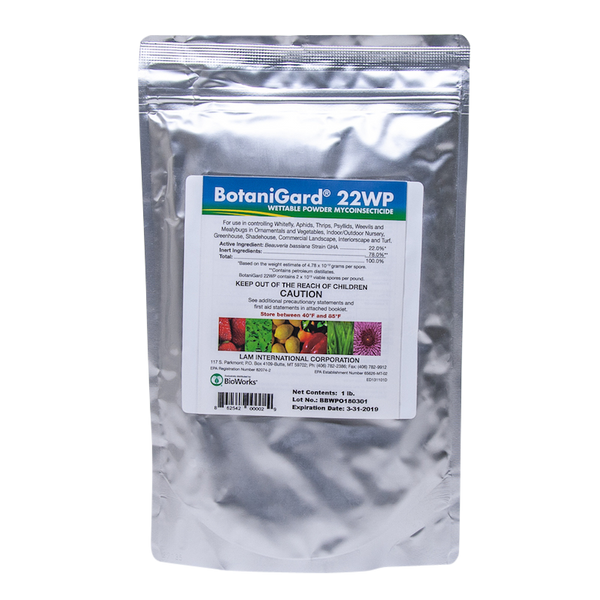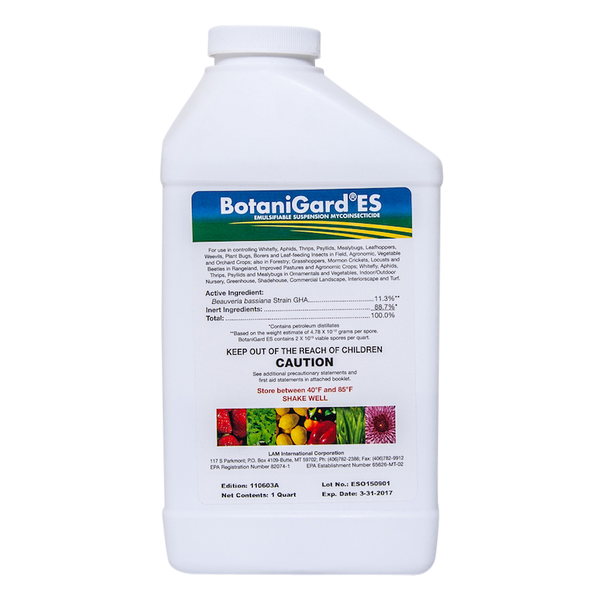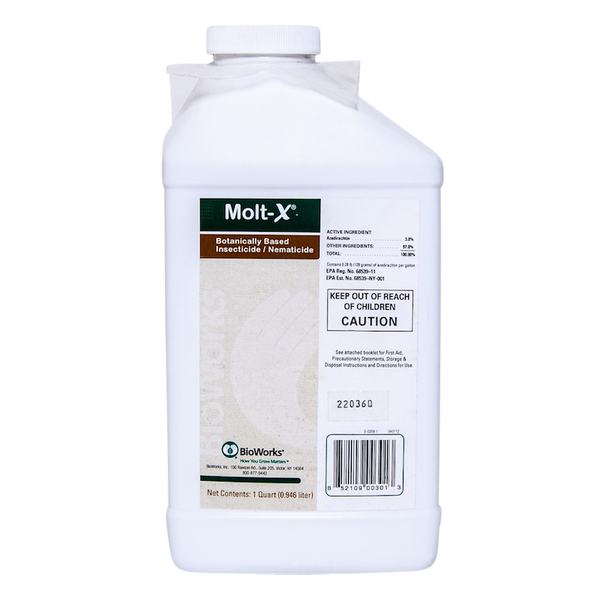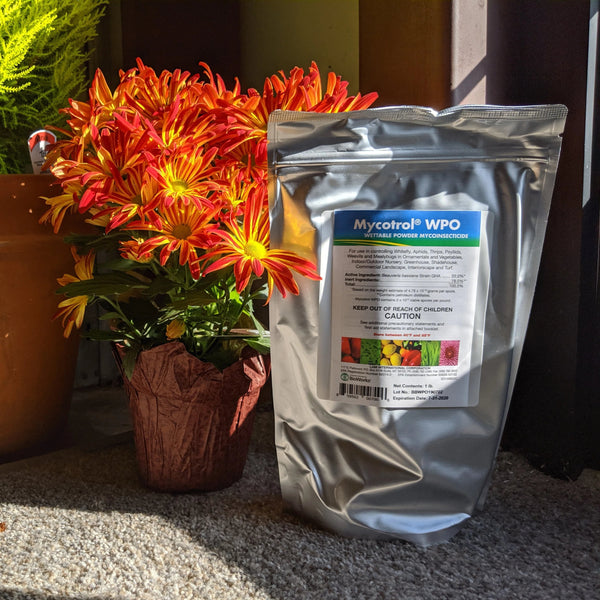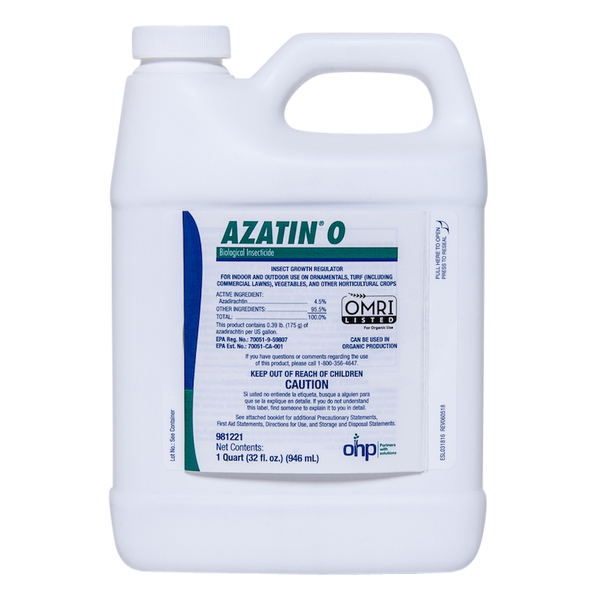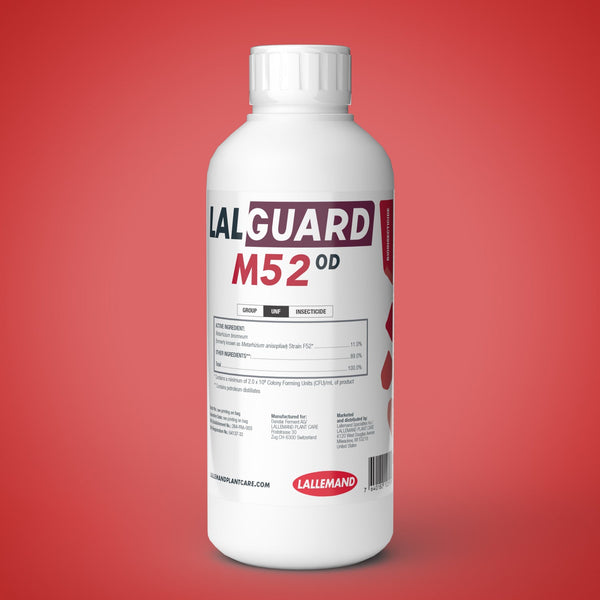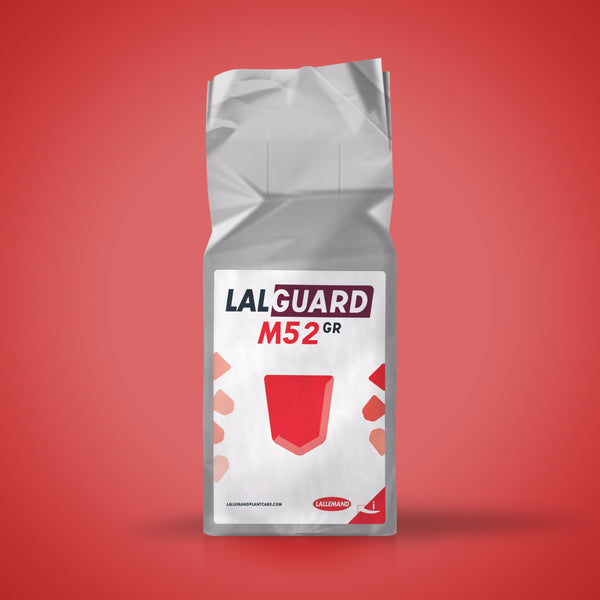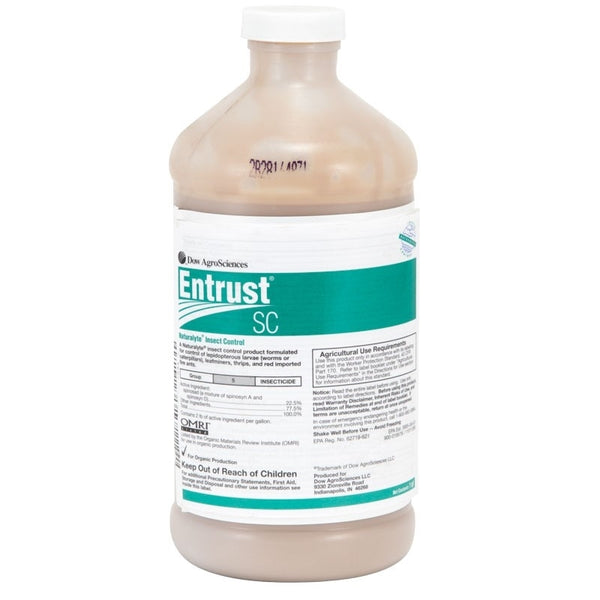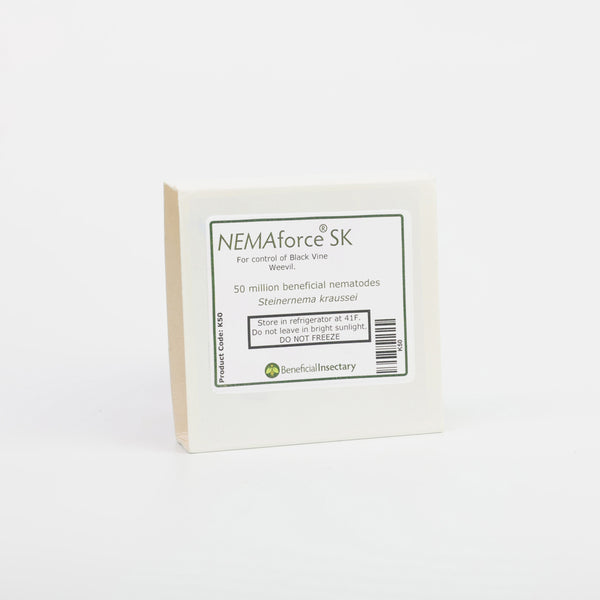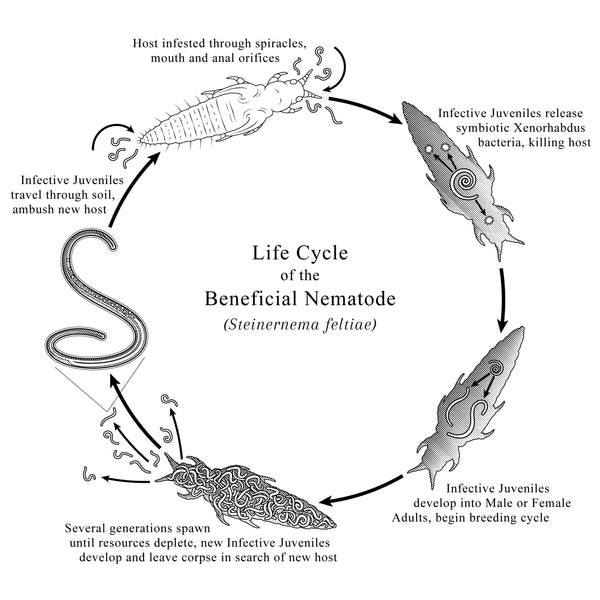Weevil Control
Suggested Products on this page are for general weevil control. The following information will be regarding Black Vine Weevil specifically, since it is our customer's most common pest.
FOR YOUR FILES: Black Vine Weevil Management (PDF)

- Black vine weevils are generalist pests that are known to attack over 100 species of plants. In their larval stage, they tend to dwell underground and feed on a plant’s root mass. Although harder to spot, especially in outdoor crops, the larvae are known to cause the most damage. Black vine weevil are generally white and can reach half an inch long. One early sign to watch for is when a container plant exhibits wilting, even when watered. Adults are generally grayish black with a characteristic ‘snout’ that feeds on the edges of leaves and mature to nearly an inch long. Although large enough to easily spot, scouting should take place in the spring when they are newly emerging. Observing in the evenings when they emerge out of greenhouse cracks and yard debris to feed can be helpful.
- Although known to attack many different crops in both greenhouse and field settings, some plants specific to the Northwest include, hops, grapes, azaleas, rhododendrons, and cyclamen.
- Black vine weevils have one generation per year. Due to this fact, if properly managed, the risk of them coming back in the same season is low. In the fall, larvae tend to dwell in the soil, chomping on roots, and waiting to overwinter. Once spring arrives, they pupate and emerge as adults ready to feed on leaf edges. In about 2 weeks, they start laying their eggs. Larvae generally hatch after 10 days and begin to feed on root systems. There they will stay for the season until winter when they are grown larvae ready to overwinter and start the process over.
-
Beneficial Insects:
Steinernema feltiae is a beneficial nematode species that can be an effective biocontrol agent. These parasites can be applied to the soil to infect and help control and array of soil-dwelling pests. Black vine weevils spend most of their time in the soil feeding off roots, giving nematodes ample opportunity to pounce. These nematodes persist in the soil for up to 18 months keeping weevil larvae populations down year-round.
General Introduction Rates: There are a variety of nematode products, which will state an array of application rates, Make sure that you follow the manufacturers recommended rates. For Sierra Biological: Generally, 1 million nematodes per 1000 square feet of soil medium. For each square foot you will need 0.66 gallons of water as a carrier to saturate a potting medium or soil 2” deep.
Unless using your nematodes immediately, store in a refrigerator. Do not freeze! When applying, use cool water, and do not apply during hot dry conditions.
Insecticide Options:
There are few spray applications that are recommended to control black vine weevils since they spend most of their time in the soil. However, soil drenches using PFR-97, Azatin O and Preferal have proven to be effective. (Other product labels that target Black Vine Weevils include): Nemasys and Venerate XC
Cultural Control Tips:
- Since Black vine weevil hide in yard debris during the day, removal of excessive crop debris can help disturb their habitat.
- Removing weed patches where black vine weevil find a consistent food source will also help disrupt their life cycle.

